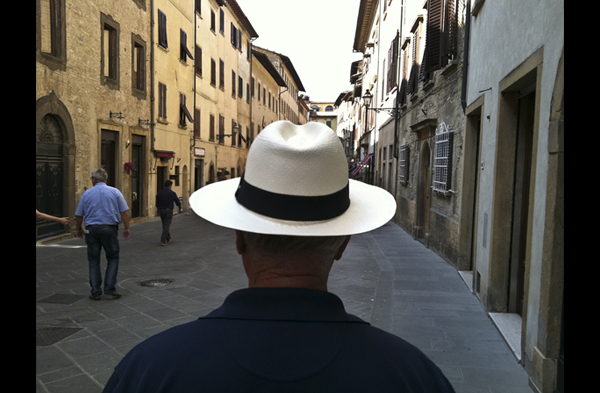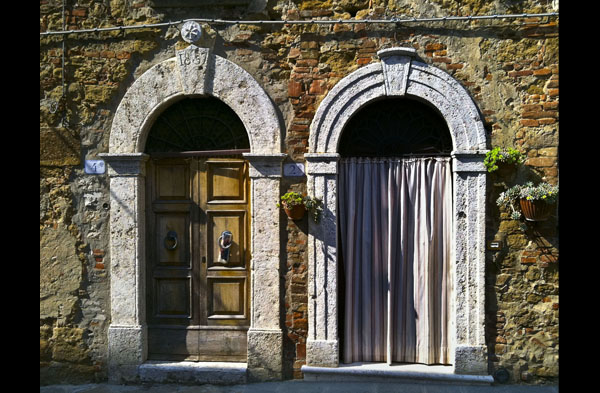ITALY BY iphone
Article by: RICHARD SENNOTT,
Star Tribune
February 11, 2012 - 11:16 AM
A still life of pears, glistening in a rich Italian light straight out of Caravaggio. Human shapes silhouetted in a shaft of sunlight against the darkness of an Umbrian church. A neighborhood girl in a playful moment. A line of old men sitting in a park, enjoying the warmth of the Umbrian sun.
I captured all these moments with an iPhone 4. They are products of my photographic journey to record daily life in the hill towns of Umbria and Tuscany using only the camera built into my smartphone. Though I am a Star Tribune photographer and have all the equipment required of a professional, what little I had brought with me mostly stayed in the hotel room. It seemed fitting to capture Italy using a camera developed by Steve Jobs, the Leonardo Da Vinci of our generation.
For travelers, snapping photos with a phone may be the best way to bring home vacation memories: nothing heavy strapped around your neck, no fear a camera will be stolen, no worries it will mark you as a tourist. When you happen upon a lovely scene, after all, the best camera is the one you have with you -- and we almost always have our phones.
Like other smartphones on the market, my iPhone astounds me with its capabilities. It handles the dark interiors of churches and landscapes of chalky Umbrian roads under brilliant blue skies. It manages low-light situations well, a point proven with images I took when I happened upon a religious procession on the narrow streets of Orvieto.
The images are 5 megapixels, as large as those shot with a medium- to high-end point-and-shoot. The "tap" focus and exposure feature lets me control which part of the image shows most sharply, whether the subject is centered or not. Once I've framed a shot, I just touch my finger on the section of the image I want to highlight, and the camera adjusts accordingly before I click the shutter.
The iPhone 4 also has a "geo-tagging" option that, when turned on, records the longitude and latitude coordinates of where the photo was taken, as well as the date and time.
One of my favorite options is "HDR," an acronym for High Dynamic Range. This creates three exposures and overlays the best values from each to yield a sharper and better exposed image. I used it to make most of the photographs on these pages.
Plenty of other smartphones -- such as the Motorola Droid 2x and the Droid Incredible 2 -- offer the same kinds of features and file size. The newly released iPhone 4S features a better lens than the one on my iPhone and takes 8 megapixel images. All of these phone cameras capture a scene as well, if not better than, most standard point-and-shoot cameras and are just as easy to use.
Operation of the iPhone 4 camera reminds me of my first Eastman Kodak Brownie camera, circa 1968. In HDR mode, I need to wait about 5 seconds between shots, about the same amount of time it took to crank the film advance knob on my old Brownie. Given the delay, I found myself waiting for the right moment to shoot, an old-school lesson in patience and focus that is a good reminder to any photographer, professional or amateur.
ADVANCES OVER THE YEARS
Throughout the history of photography, image-making has been defined by the technical limitations of the camera. There is a reason the sun shines on both sides of buildings in the first photo ever taken, by Frenchman Joseph Nic�phore Ni�pce in 1826. It's because the exposure was eight hours long. Early photographers were like sorcerers operating under dark capes with imposing box cameras on tripods. Today, technical limitations are almost nonexistent.
Now we have smartphone cameras, with their small size, convenience and ability to record thousands of still images and shoot high-definition video. They have so many additional functions and applications -- from a compass and alarm clock to a language translator and GPS, not to mention a phone for chatting with your friends -- that I consider them the Swiss Army knife of pocket cameras.
During my travels, I discovered only one downfall to shooting with a smartphone. When we don't know the language, photographers ask with our eyes and a gesture. I find that the question "Can I take your picture?" is understood the moment I mimic pushing the shutter with an index finger whenever I have a couple of Nikons around my neck. But asking with your iPhone requires a new and different dialogue between photographer and muse. It's not always clear what you're asking.
After a while, I found that if I took a picture and then showed it to the subject, as I could with an old Polaroid, my intention, not to mention my legitimacy, was understood.
Sometimes an image would elicit "ahhs" and even a few expressions of "bellissimo!" or "molto bello," which both roughly translate as "very beautiful."
I guess that's what every photographer is going for, ultimately. But it always sounds so much nicer in Italian."
















